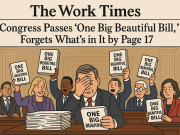On the Tarmac: Spirit’s Cash Crunch and What It Means for Workers, Operations, and Communities
Recent headlines have warned that, fresh from bankruptcy proceedings, Spirit Airlines is running low on cash and time. For the people who keep planes flying, bags moving, gates turning and customers reassured, this is not a financial footnote: it is a workplace emergency that ripples across communities, contracts, and careers.
The immediate human stakes
When an airline flags a tight cash runway, the first image that comes to mind is grounded jets. The second should be people: pilots, flight attendants, maintenance technicians, ground crews, reservation staff, baggage handlers, cleaners, catering teams and the managers who coordinate them. Their livelihoods, schedules and well-being are directly exposed to the carrier’s liquidity. Schedules are the artery of an airline; when they get trimmed, overtime disappears, part-time shifts evaporate, and predictable income becomes unpredictable.
Work communities around an airline are densely connected. Vendors that supply food, tugs, de-icing, IT services and airport retail depend on predictable revenue. Local contractors who have hired temporary staff to meet airline demand face abrupt contractions. For many workers, especially those in service and hourly roles, a sudden stop in operations can mean immediate financial pressure—rent, childcare, medical bills—without a long runway to adjust.
Operational fault lines and safety perceptions
Cash constraints force hard choices. Fuel contracts, aircraft leases, and labor agreements are costly items on the ledger. When leadership seeks quick savings, the temptation to cut corners—less maintenance outsourcing, delayed equipment upgrades, or reduced staffing buffers—can surface. Aviation regulation and safety culture are designed to prevent those kinds of tradeoffs, but stressors intensify the pressure points where operational resilience is most needed.
Moreover, the public watches closely. Passenger confidence is fragile; repeated cancellations, long delays, and stories of disrupted travel compound brand damage. For workers, the reputational fallout can create an additional workplace burden: defending service standards while coping with shrinking resources, and managing more anxious, angry customers with fewer tools.
Contracts, unions, and bargaining power
Labor relationships become central during a liquidity crisis. Where collective bargaining exists, unions and represented workers may have more leverage to preserve pay protections, severance, recall rights and safety commitments. Where labor is fragmented or non-unionized, individual workers face greater uncertainty and fewer formal protections. The bankruptcy context can reframe bargaining dynamics, but even outside of legal specifics, transparent communication and fair treatment are critical to maintaining morale and avoiding protracted labor disputes.
Vendors, airports and the broader ecosystem
An airline does not operate in isolation. Airports depend on carriers for passenger volume that supports retail, parking and ancillary revenue. Smaller airports that rely heavily on a single low-cost carrier may see revenue gaps quickly. Ground handlers, catering companies, and regional maintenance organizations often operate on thin margins; a sudden reduction in flights can force layoffs and contract renegotiations. The socioeconomic effect can be geographic—hitting tourism-reliant towns and airport-centric neighborhoods—so the shock is rarely limited to the carrier’s balance sheet.
The psychology of uncertainty and the social contract at work
Beyond contracts and cash flows, there is a human psychology to prolonged uncertainty. Workers facing ambiguous timelines for rehiring, redeployment, or layoffs experience cognitive load that reduces productivity and increases errors. Trust in leadership erodes when information is sparse or inconsistent. Conversely, workplaces that maintain clear, compassionate communication, honor commitments where possible, and provide resources for mental health and financial planning can preserve dignity and loyalty even while hard operational changes unfold.
Practical steps for workers and workplace leaders
- Immediate contingency planning: Leaders should map the most critical functions needed to operate safely and sustainably, and identify roles that can be cross-trained. Workers should document their transferable skills and explore redeployment within the larger aviation ecosystem.
- Transparent two-way communication: Regular updates, town-hall style conversations, and channels for feedback reduce rumor-driven anxiety. Clear timelines and honest admissions of uncertainty build credibility more than empty assurances.
- Financial triage and support: Employers and local institutions can offer bridge resources: short-term advances, emergency grant pools, flexible scheduling, and connections to community financial counseling. Those measures can stabilize households while negotiations or restructuring play out.
- Skill resilience and upskilling: Workers and managers should invest in quick, targeted upskilling that improves mobility—aircraft dispatch, avionics basics, customer-service technology, or logistics coordination. Employers can partner with community colleges or vocational programs to create rapid reskilling pathways.
- Network thinking: Staff should leverage industry networks, alumni groups, and regional job-matching services. Airports and regional economic development agencies can convene hiring fairs to connect surplus labor with growing carriers or adjacent industries like logistics.
Leadership choices that matter
Leaders who are decisive about values while pragmatic about resources set the tone. Preserving safety, honoring essential labor protections, and insulating front-line staff from avoidable harm should be non-negotiable. That may mean prioritizing certain services over softer benefits, or finding creative swaps—deferred bonuses tied to performance, voluntary reduced schedules with guaranteed recall, or targeted retention incentives for critical maintenance staff.
Organizational leaders can also use this moment to rethink business models. Ancillary revenue strategies, partnerships with cargo and logistics operators, dynamic scheduling technology, and cost-sharing with airports for marketing can create more diverse revenue streams that reduce dependence on seat-fill alone.
Policy levers and community responses
There are levers beyond the company. Local and regional policymakers can support transition services, fund short-term unemployment mitigation, and facilitate employer partnerships to absorb displaced workers. Airport authorities can prioritize essential routes and consider short-term fee adjustments or incentive programs to maintain connectivity for communities at risk.
At the national level, transparency around airline liquidity and the economic impact of carrier instability can inform policy responses that protect workers and travelers without subsidizing unsustainable models. Thoughtful safety nets—targeted, time-limited, and tied to workforce retention or redeployment—can blunt immediate harm while preserving incentives for structural reform.
A test of character: industry, community and individual agency
Crises reveal what systems value. Will the industry double down on cost-cutting that externalizes risk to contractors and hourly workers? Or will it use the shock as an opportunity to build more durable, humane operating models that balance low fares with stable jobs, safer operations and community resilience? The answer will not be decided in executive suites alone. It will be shaped by workers who organize and adapt, by leaders who center people in decisions, and by communities that insist on continuity and fairness.
What the work community can do now
- Document: Keep records of schedules, pay practices, and communications that affect employment status.
- Connect: Join or form peer networks that share job leads, resources and emotional support.
- Prepare: Update resumes, certifications and licensing; consider temporary transitions into adjacent sectors like cargo, logistics, or airport operations.
- Engage: Participate in workplace discussions and local policy conversations to push for protective measures that reduce harm during transitions.
Conclusion: A grounded optimism
News of a carrier running low on cash is a call to action for the work community. It is a moment to protect livelihoods, to insist that safety and dignity are preserved, and to reimagine how a low-cost aviation model can coexist with stable jobs and resilient communities. The pathway out of crisis is never solely financial; it is social and organizational. Thoughtful leadership, worker agency, swift community support and constructive policy choices can together shorten the period of uncertainty and create a more durable future for travelers and the people who serve them.
For workers and leaders on the tarmac, the immediate tasks are practical: plan, communicate, support, and adapt. For the broader industry and civic life, the task is larger: to invent business practices that reward efficiency without hollowing out the human infrastructure that makes flight possible. That mission is daunting, but it is also a chance to reshape an industry around shared prosperity, not just fares and margins.




























